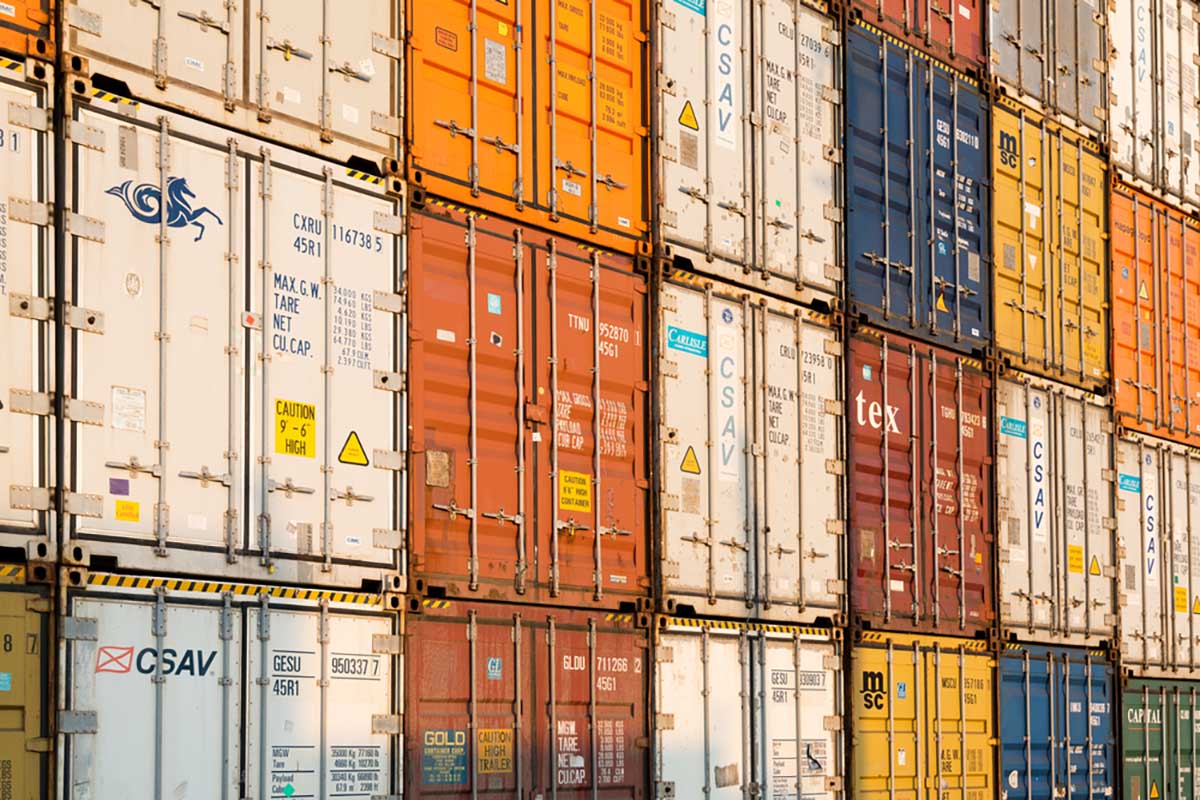
Port activity, which has a strong correlation to demand for cardboard boxes, is expected to slow in coming months. | Jose Luis Stephens / Shutterstock
Shipping containers moving through the Port of Long Beach are expected to slow in November and December, authorities said, activity that has a strong correlation to demand for cardboard boxes globally as well as supply of old corrugated containers.
Moreover, heading into the first half of 2026, consumers may be less interested in purchasing goods due to “price escalation,” said port CEO Mario Cordero during a Nov. 7 press conference. However, he added that consumer spending would hinge on “how far we move forward with mitigating the kind of tariff percentile numbers that we were discussing earlier this year.”
Recent data from the American Forest and Paper Association indicated that containerboard production through September had dropped by 3% on the year, amid capacity closures and high mill inventories, suggesting lackluster demand. And US exports of recovered paper fiber are roughly flat on the year through July, according to US International Trade Commission data.
Amid more cautious consumer spending, the port has seen a 52% decline over the past year in winter clothing including coats and sweaters, Cordero said. Nevertheless, he expects a “robust” Black Friday, with shipments of toys from China down only 3.2% on the year. He added that 2024 was a record year for container shipments at Long Beach, driven by six months of historic levels he attributed last December to concern for potential dockworker strikes.
The rapid growth of artificial intelligence and data center infrastructure is driving an increase in shipments of electronics, especially the required chips, Cordero said.
Just six miles from Long Beach, the Port of Los Angeles had its best quarter on record in July through September 2025, despite a 7.5% decrease in containers on the year. For the first nine months of the year however, TEUs (20-foot equivalent units — the standard measurement used to quantify cargo capacity in the shipping industry) were higher by 3% on the year.
Along with Los Angeles and New York/New Jersey, Long Beach is among the busiest US container ports.
Tariff impacts and China
Although ports have seen an effect from a volatile tariff environment, the worst potential outcomes of trade war disruptions have not occurred, Cordero said. He added that so far consumers have not seen significant price impacts, with manufacturers and retailers distributing some of those costs.
However, as 2026 approaches consumers will likely see higher prices as shippers pass on a higher percentage of those costs to the consumer. “We’re hoping this will be offset by further trade agreements between the United States and China, so we can come to a pragmatic resolution that is beneficial to both sides,” Cordero said.
Along with Los Angeles, Long Beach has seen record cargoes since late 2024 as shippers front-loaded cargoes to mitigate the worst of the tariff impacts, said Noel Hacegaba, chief operating officer of the Port of Long Beach.
And although the recent US trade agreement with China should help boost cargoes to the US in the near term, Cordero said. But in the years ahead, “the real question is how much of that reliance on manufacturing that presently is in China will move to other regions of the world, more specifically Southeast Asia.”
Hacegaba noted that container volumes to and from China in the past six years have dropped from around 70% of the port’s total to around 60%. Although the reprieves on trade policies should increase activity, “what’s missing is a long-term trade deal” to provide certainty and stability for importers and exporters, he said.
More stories about exports